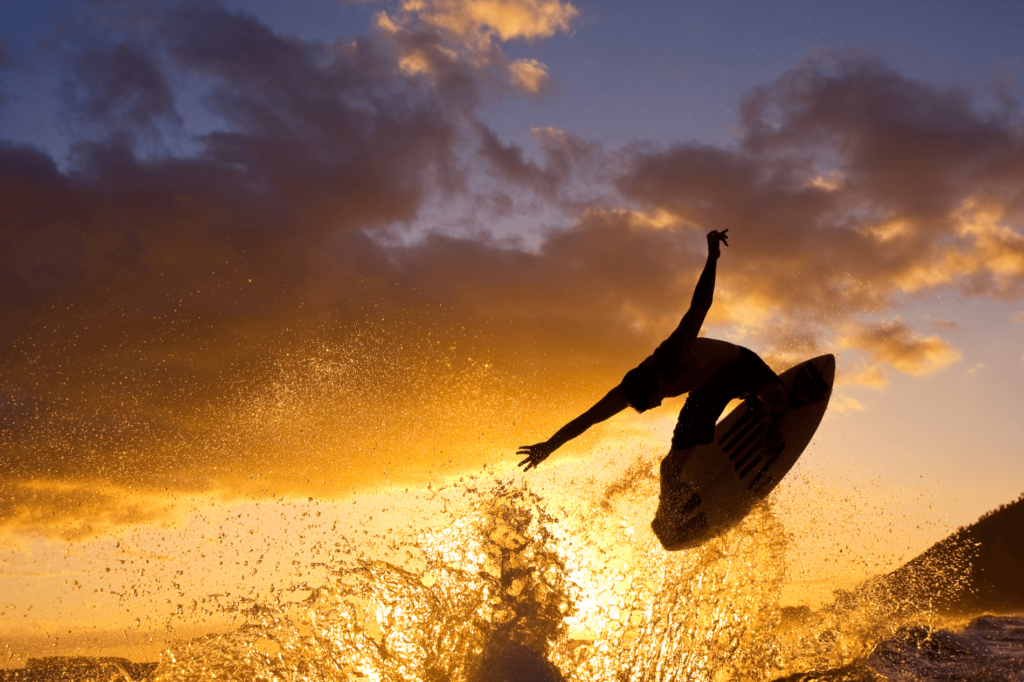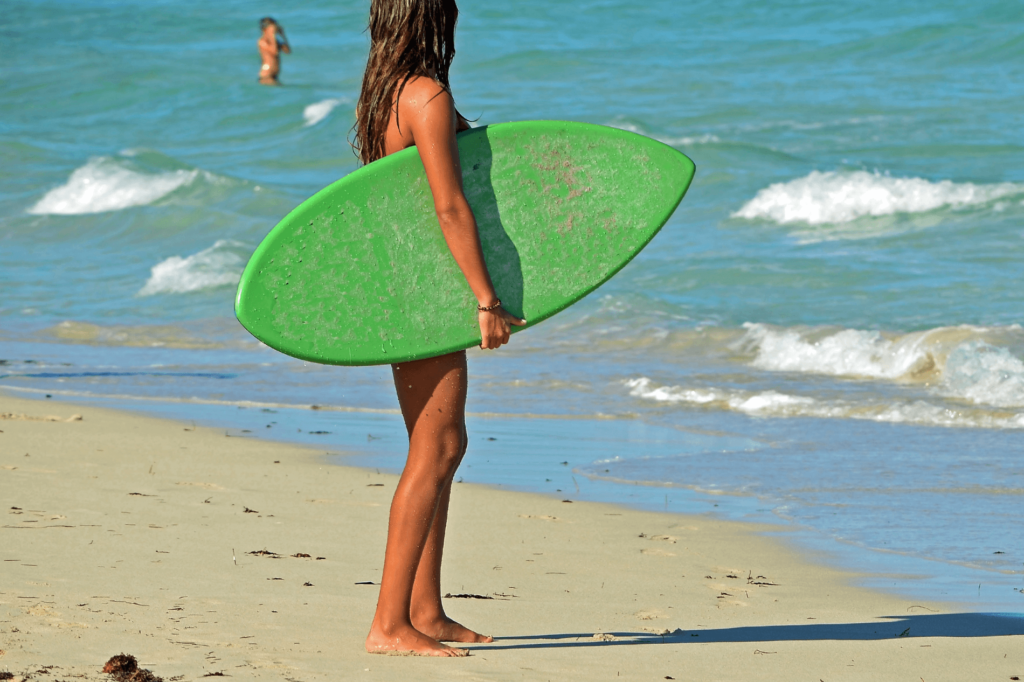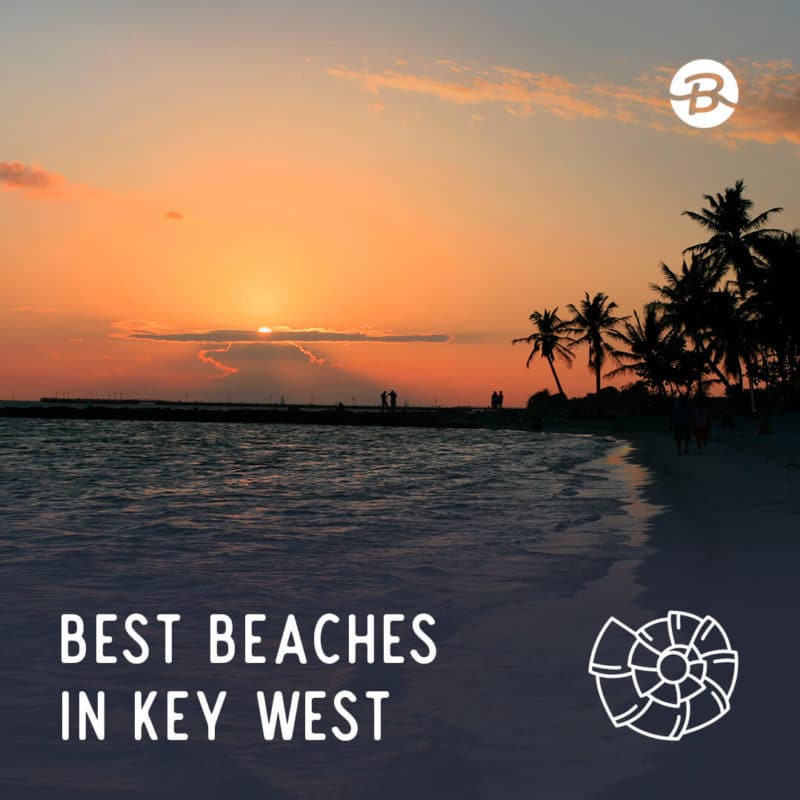Skimboarding is one of the most fun beach activities. Whether you’re a new skimboarder or you’re just entertaining the idea of learning, one of the most critical factors of your overall performance is finding the right skimboard. In this guide, we’ll share a skimboard size chart and other tips for choosing your perfect size skimboard.

Using the right size board will allow you to successfully skimboard in specific conditions and perform the tricks you want. Let’s take a look at everything you need to know about selecting the most appropriate board!
Skimboard Sizing 101: Things to Consider
To ensure you go with the right board for you, you’ll want to consider several factors. This includes your skill level, your weight, local conditions, skimboarding style, skimboard material, and other skimboard features.

Skill Level
The skimboard size chart we’ll share below is most appropriate for deeper waters. However, beginners skimboarders who want to stick to sand skimboarding are good to use smaller boards. However, you shouldn’t ride the board below your stomach no matter how skilled you are.
Weight
The rider’s weight plays a crucial role in picking the most appropriate skimboard size. Larger boards are best for skimboarders who have more weight to throw around. This allows for more control.
Local Conditions
Your local water conditions also have a lot to do with choosing the best skimboard. But, the rule is simple: smaller boards are best for bigger waves (think California beaches), and bigger boards are best for smaller waves (think East Coast beaches).

Skimboarding Style
There are two main types of skimboarding styles: wave skimming and flatland skimming. Wave skimboarding is just that, it’s done out on the waves like surfing. On the other hand, flatland skimming is done in very shallow waters. Beginners especially like flatland skimboarding.
Skimboard Material
Skimboard material also affects its size and weight so let’s take a quick look at common physical materials: wooden, fiberglass, carbon fiber, Kevlar, and graphite.
Wooden skimboards are best for beginners to keep a good balance and skimming speed. A wooden board is heavier than other boards and allows new skimboarders to have more control of the board.
Fiberglass skimboards have a foam core. Foam boards work well on flat islands and in deep waters. You can find various size fiberglass boards to fit your needs.
Carbon fiber skimboards offer a perfect middle ground for all levels. They usually have a foam core, too. The deck is carbon fiber, so it’s very tough, lightweight, and reasonably flexible.
Kevlar skimboards have an inner core of high-density foam and a layer of reinforcing Kevlar fibers and durable epoxy resins. These boards are extra stable, so they’re ideal for rocky areas. They handle skimboarders of all weights very well, too.
Graphite skimboards are a step up from standard wood boards. They’re also wooden, but they have a graphite layer that helps reduce the board’s overall weight, which translates into more maneuverability and speed.
Skimboard Thickness
There are 4 standard options for the thickness of a board: 3/4-inch thick, 5/8-inch medium, 3/4 inch tapered, and 5/8-inch thin. Thicker boards are heavier and less responsive in the water. But, the trade-of is that they’re easier to ride, and they’re usually more buoyant than thinner boards.
Overall Shape
Skimboards come in several standard shapes. Each one has a distinctive look that makes them reasonably easy to discern from one another. It’s also important to understand that a skimboard’s overall shape affects its mobility. Here’s a quick rundown of these shapes:
- Thomas skimboards have a squared-off nose and tail section and a wide midsection. They’re a compromise between Proto and Sacramento skimboards (mentioned below).
- Sacramento skimboards have an extra-wide waist, with deep double cutouts that make the board easier to pop and turn, a narrow nose, and an even narrower tail. These boards are reasonably maneuverable.
- Raza skimboards are very similar to Sacramento boards but have an oval nose and a wider tail for better maneuvering.
- Prota skimboards have a flat tail, a flat nose, and a wide circular midsection with double cutouts. Boards of this shape have better stability and straight tracking, making them great for long rides and bank slides.
- Streamline skimboards have a narrow midsection, curved rails, and a bulbous large tail and nose. They’re suitable for riding fast, especially in small waves and when traveling in a straight line. They’re also good for doing ollies, bank slides, and other relatively simple tricks.
Weight
Weight is a significant factor in the agility and responsiveness of a skimboard. Heavier, thicker boards are usually easier to ride. However, they can make it difficult to perform technical tricks and abruptly change directions on the water. On the other hand, thin boards are harder to control at full speed but can easier move and perform tricks better.
Layup (or Flex)
When shopping for a skimboard, the flexibility (or layup) is either stiff, rigid, or flexy.
- Flexy skimboards tend to be relatively light and the most flexible of all, making them highly responsive to changes in your body position, making them more challenging to ride.
- Rigid skimboards have a lot less flexibility and more weight, making them easier to control.
- Stiff skimboards have mid flex and weight, making them a good compromise between the other two.
What size should my skimboard be?
Since there are so many variations in skimboard shapes, weights, thickness, materials, and flex, you can’t just pick out a board by size alone. But, you can zero in on the right size skimboard buying guide tips and a size chart.

Choosing the Right Length Skimboard
In general, the following factors can help you choose the right length board.
Stand the skimboard up in front of you on its tail. If you’re an experienced rider, it should reach somewhere between your lower chest and below your chin. If you’re a beginner, you can get away with using a smaller board if you’d like.
If you don’t have the board to test with, use a tape measure to determine if the length is appropriate for your height, riding style, and skill level.
Skimboard Size Chart
Here’s your ultimate skimboard sizing chart:
| Riding Velocity | Wave Conditions | Rider Weight | Best Overall Board Dimensions | General Skimboard Size |
| Normal to high | Large waves | 210 – 235 lbs | 54 x 21.5 in. | XX large |
| Any | Any size waves | 190 – 210 lbs | 53.5 x 20.75 in. | X large |
| Any | Any size waves | 170 – 190 lbs | 52.5 x 20.5 in. | Large |
| Any | Any size waves | 150 – 170 lbs | 52 – 52.5 x 20.25 in. | Medium – Large |
| Any | Any size waves | 130 – 150 lbs | 51.5 – 52.5 x 20 in. | Medium |
| Any | Any size waves | 105 – 130 lbs | 51 x 19.75 in. | Small |
| Normal to high | Smaller waves | 75 – 105 lbs | 48 x 19 – 19.25 in. | X Small |
| Any | Any size waves | Below 75 lbs | 45 or less x 19 or less in. | XX Small |
A Few Skimboarding Tips

Now that you know how to find the perfect size skimboard, take a look at our top skimboarding tips!
- If you’re a beginner, start with flatland skimboarding. The best flatland skimboards are wooden boards. A large board is good, too, as it has increased foot area and more float.
- Fiberglass and foam skimboards are good for both wave and flatland skimboarding.
- The board’s thickness affects how it works. Brush up on the different materials and how thick they are above.
- If you’re unsure about what skimboard size to go with, lean towards sizing up.
- A few popular skimboard brands are DB skimboards, Exile skimboards, Zap skimboards, and Victoria skimboards.
Skimboard Size Chart: Final Thoughts
Now you know all about choosing the best size skimboard for you. Remember to consider your skills, your weight, and water conditions. The board’s thickness, weight, construction, and flexibility also make a difference.
Considering all the factors we’ve mentioned in this guide, along with the above chart, you should be able to pick the most appropriate board for you. We hope we’ve helped you get ready to buy your new board and get out there on the water. Enjoy!


